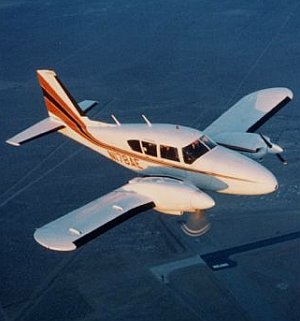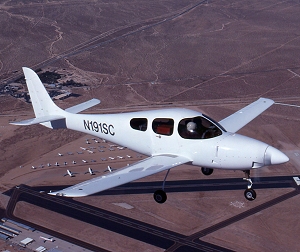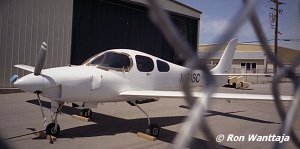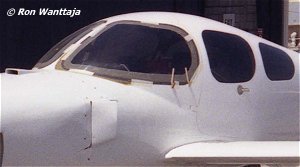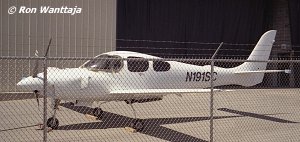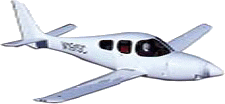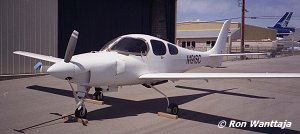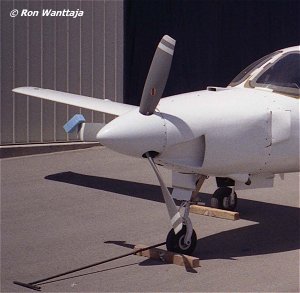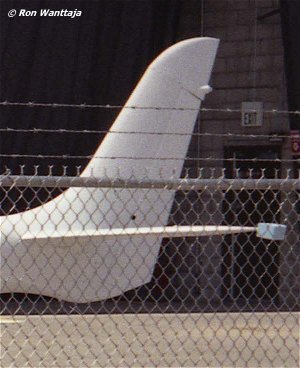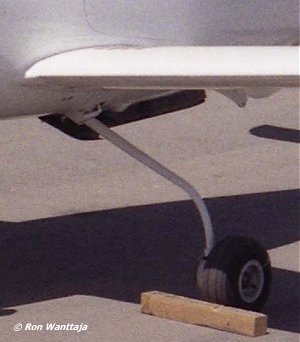|
|
|
|
|
|
|
|
|
|
VARIEZE
Model 28 Mini-Viggen
Model
31 VariEze POC
Model 33 VariEze
Air Sport EZ (VariEze O-235)
Ganzer Gemini
![]()
LONG-EZ
Model
61 Long-EZ
Model 61-B Long-EZ-B
Long-EZ-160
Perry Mick's Duckt![]()
TWIN-ENGINED VARIANTS
Ivan Shaw's Twin-EZ
Michael Bowden's Two
EZ MS1![]()
MILITARY VARIANTS
Sneeky
Pete
Monkey
Green / Vz-10
California Microwave/Lockheed CM-30
Model 144 CM-44; CM-46
N.A.L. LCRA
DRDO-ADE Rustom-I![]()
JET VARIANTS
Jet LEZ Vantage (Task Vantage)
XCOR Aerospace EZ-Rocket
AFRL/ISSI Borealis (Long-EZ PDE)
COZY
Puffer/Co-Z Cozy Classic/RG
Puffer/Co-Z Cozy Mark III/RG
Puffer/Co-Z Cozy Mark IV/RG
Dickey E-Racer Mk-1
Richter CozyJet
Aeromet AURA
Leon Twin
Cozy, Xtra EZ![]()
VELOCITY
Velocity 173, Velocity Elite
Velocity
SE, Velocity SE RG
Velocity
XL, Velocity XL RG, Velocity XL-5
U.S. Army Vz-11
Others: VJet 900, X-Racer, V-Twin![]()
BERKUT
Berkut 360, Berkut 360 FG,
Berkut 540, Berkut 540 FG
Super Berkut
540
Berkut Jet, Dick Rutan's Berkut![]()
PROXY
SkyWatcher, Firefly, SkyRaider![]()
OTHER EZ-INSPIRED DESIGNS
Wright Stagger
EZ
Beard Two-Easy
Glassic SQ2000, Conner Rotor-EZ
Parrish Dart
Heier Gemini
ADS A-701 Dominator UAV
Infinity 1, CH-3 UAV,
Griffon/Mobius, Stag-EZ,
Open-EZ, Phoenix, Orion GT,
AeroCanard, Speed Canard
Haynes Skyblazer
VARIVIGGEN
Model 27 Vari-Viggen
Model
32 Vari-Viggen SP
Chasles Microstar
Rayne Viggenite, Olson Viggenite 13B ![]() DEFIANT
DEFIANT
Model
40 Defiant POC
Model 74 Defiant ![]() QUICKIE
QUICKIE
Model
49 > Model 54 Quickie
Quickie Q2, Q200
Tri-Q, Super
Quickie
Dragonfly Mk.I
Dragonfly Mk.II/H
Dragonfly Mk.III
Eagle X-P1, Eagle X-TS 150
Big Bird (Free Enterprise)
![]() SOLITAIRE
SOLITAIRE
Model 77 Solitaire
Task Silhouette
Harrison Skyblazer
R.A.F. SINGLE-PROP ONE-OFFS
Model 68 Laser (AmsOil Biplane Racer)
Model 72 Grizzly
Model 76 Voyager
Model 81 Catbird
Model 97 Microlight > Mercury
Models 58/59 > Model 120 Predator![]() SCALED SINGLE-PROP AIRCRAFT
SCALED SINGLE-PROP AIRCRAFT
Toyota Lima 1 (modified Piper Aztec)
Model 191 Toyota Lima 2
Model 302 Toyota TAA-1 Budgie ![]()
Model 309 Twin Recip (Adam 309)
Adam A500 CarbonAero
Adam A700
DARPA Heliplane![]()
Model 355 Firebird > production version
Model 367 BiPod
Bird Symmetry![]()
MULTI-PROP AIRCRAFT
Model
78/79 Commuter
Scorpion "21st Century Aircraft"
Model 115 NGBA (Starship-1)
Beechcraft Model 2000/A Starship
Model 133
SMUT (ATTT)
Model
158 Pond Racer
Models 209-220 TIDDS (SOFTA)
Model 254 Songbird
Model
202 Boomerang
Morrow MB-300 Boomerang
Model 356 Johnson Dynamite
Model 35
Ames AD-1 'Skew Wing'
![]() MILITARY JETS
MILITARY JETS
Model 73 NGT > Fairchild T-46
Model
151 ARES (LATS)
Tailsitter Stealth Fighter
Models 208, 215, 222 TIDDS (SOFTA)
Model 223 TIDDS (SOFTA)
Manta
![]()
BUSINESS JETS
Model
143 Triumph ("Tuna")
Model
247 Vantage (Visionaire VA-10/A)
Eviation EV-20A Twin Vantage
Model
271 Williams V-Jet II
Model
301 Pronto > Eclipse 500![]() HIGH FLYERS
HIGH FLYERS
Grasshopper (CLA)
Model
281 Proteus, Model 395
Model
311 Capricorn (GlobalFlyer)
Model
318 White Knight
Singapore Aerospace LALEE
LLNL Defender
Model 348 White Knight Two
Model 351 Stratolaunch Roc VLA
Model 226 Raptor/Talon (Quiver)*
Model 233 Freewing (Scorpion)
BAE Systems unnamed target![]()
Model 281 Proteus*
Singapore Aerospace LALEE*
LLNL Defender![]()
TRA 410 Affordable UAV*
TRA 324 Scarab > Scarab-LACM
TRA 350 Peregrine (BQM-145A)![]() Orbital Sciences Tier II+
Orbital Sciences Tier II+
Model 260 Northrop Tier II+
Model 326 NG X-47A Pegasus
Northrop Grumman X -47B
Model 355 Firebird* > NG Firebird*
NG Proteus 'Hunter-Killer'
NG Global Hawk 'Hunter-Killer'
![]()
Bell Textron TR911X Eagle Eye POC
Bell Textron TR916 Eagle Eye (USCG)
Bell Textron TR918 Eagle Eye
![]() IAI-Malat Scout > Searcher/Chugla
IAI-Malat Scout > Searcher/Chugla
![]()
Aeromet AURA*
California Microwave/Lockheed CM-30*
California Microwave CM-44 (Model 144)*
California Microwave CM-46*
ADS A-701 Dominator
CH-3 (China)![]() * indicates optionally-piloted vehicles
* indicates optionally-piloted vehicles
SINGLE-STAGE TO ORBIT
Pacific American Phoenix-M
Clapp/Rutan/Raymer Black Horse
McDonnell Douglas DC-X Delta Clipper
Rotary Rocket Roton
![]() SPACESHIP EVOLUTION
SPACESHIP EVOLUTION
Faget/Johnson Maliboo
SpaceShipOne scale
models
Model 316 SpaceShipOne
Model
346 SpaceShipTwo (project)
Model 339 SpaceShipTwo
Models 340-344 Space Resort
![]()
OTHERS
Kistler
Zero (K-0) TSTO
Darpa/SLC RASCAL TSTO
Crew
Transfer Vehicle (CXV)
Comet/Meteor module (CSTAR)
Model 267 NASA X-38A (CRV)
CAPSULES/GONDOLAS
PLADS/Rockbox
Earthwinds Hilton
Voyager Aeolus 1
WF-1 Global Hilton > Voyager 6 DLS
Virgin gondola ![]()
AIRCRAFT PARTS
Bölkow Junior canopy
Tacit Blue composite elements
Senior Citizen (unknown)
Zivko EDGE wing
IAI Chugla/Searcher wing
OSC LT-11 Pegasus flying surfaces
SOFIA aperture (cavity door)
Liberty XL-2 construction > Europa
GippsAero GA8 Airvan testing
Cessna Citation composite work
Richey VersiPlane fuselage
Composite oxydizer tanks![]()
R/C MODELS
Model 1 "A-12"
Model
287 Alliance
Flight of the Phoenix flying model
Super
STOL (SSTOL) model
Model 313 scale model
Model 316 SpaceShipOne scale
models![]()
OTHERS
Northrop B-2 RCS Model
Model 173 TFV towed
vehicle
Sandia
SU-25 ROAR scale decoy
Whispercraft movie mock-up
BOATS
Ames Industrial PARLC
Sail America Stars & Stripes wing-sails
![]()
CARS
General Motors Ultralite
Clarinval Supersport S22 (S-2000)
Cal Poly Solar Car
Arizona Solar Racing Team Monsoon
Turbulence
![]()
VARIOUS
Zond Z-40 Bladerunner blades
Computer numerical control
Boeing wind tunnel
blades
Truck-based wind tunnel
Portable pedal power
Composite bridge
Overbalance water wheel
Solar water heater; Pyramid house
EZ REFERENCE

